Mini-host: varieties and types, recommendations for growing
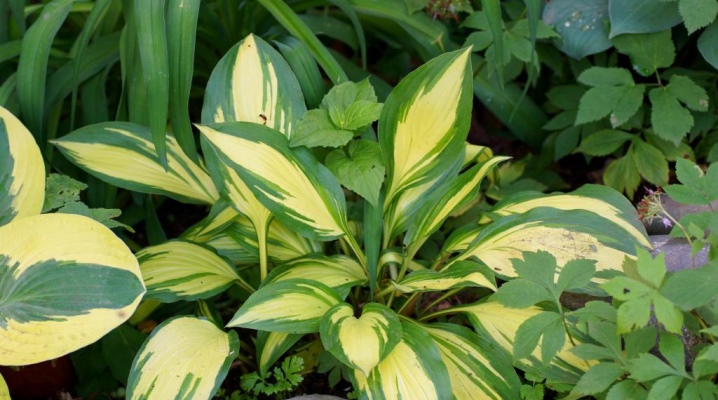
Hosta, or funkiya, is a perennial plant belonging to the Asparagus family. It has about 40 species. In the wild, it can be found in the Far East and the Kuril Islands, in East Asia. The plant prefers moisture, therefore it grows along water bodies and rivers. By size, hosts can be divided into 6 classes. The smallest are mini-hosts and dwarfs.
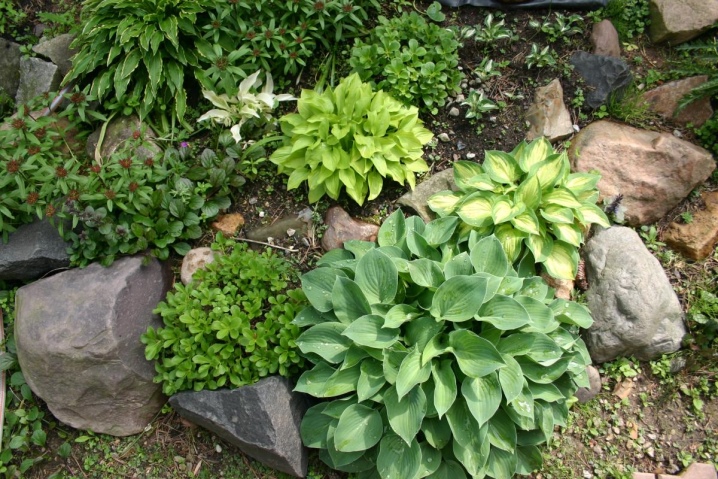
Description
Mini-hosts are an ornamental shrub with a beautiful shape and color. The height of the bush is no more than 15 cm, and the dwarf one is no more than 10 cm. A leaf in a miniature hosta usually has an area of 26 cm2, and in a dwarf one even less - 13 cm2. The plant is quite popular among gardeners, as it does not require special care and takes up a minimum of space for planting. The host is unpretentious to the composition of the soil and pruning, there are no special requirements for wintering and replanting. The only condition is the presence of moisture. In any flower garden or garden, the mini-host will look compact and attractive. It can be planted in a small flowerbed or in a pot on the balcony.




The dwarf variety is rather slow in growth. He will be able to fully reveal the beauty of his leaves only in the third year of growth. In the composition, dwarf varieties are beautifully combined with their tall and medium-sized brethren, as well as other flowering plants. In order for them not to get lost in the flowerbed in the spring, it is advisable to plant them in several bushes in low pots made of plastic or ceramics.
Care, watering, feeding
Despite the simplicity of growing these small plants, they have some preferences, the fulfillment of which will allow the bush to delight you with its attractiveness for many years. The host has a small size and, accordingly, a small root system. She is very sensitive to lack of moisture and its excess. Watering must be done frequently, but in moderation, so that there is no stagnation of moisture. Well-drained soil will help with this. Use fine gravel mulch or bark for this.
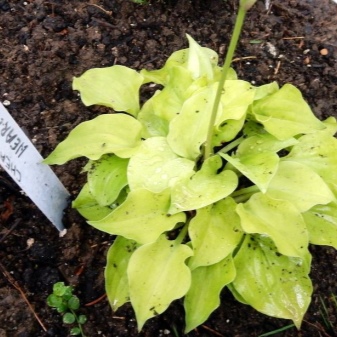

As for planting in a flower bed, the hosts must be planted in several bushes and protected with a dug-in plastic tape. This is necessary so that they do not get lost in the flower bed against the background of other plants. Also, the tape will serve as additional protection against pests, only in this case its height above the ground should be at least 7-10 cm. The tape will also protect against the spread of the roots of neighboring plantings.


Plant the bushes in early June. This is the best time to strengthen the root system for winter. Choose a planting site in a ventilated, semi-shaded area. The longer the hosta grows in one place, the smarter and stronger its bush becomes.
When preparing for winter, the bushes must be covered with leaves or sawdust. In the spring, it will be good to do mulching with a thin layer of peat. Additionally, you can knock around with wood chips or bark - this will protect against slugs and retain moisture. If you decide to propagate the shrub by dividing, then it is better to do this in August. Use plants that are more than 3 years old and carefully separate the roots so as not to harm the host. Shoots of small hosts are not pruned in autumn, as they are an additional shelter from frost, and in spring they will serve as a beacon about the place of growth of the shrub. As soon as fresh shoots hatch in the spring, the dried ones can be safely removed.


You can fertilize the plant with granular balanced dressings.Once in the spring, when there is still snow, you can just scatter them under the bush, the second time - at the beginning of summer. You should not fertilize later, as this can provoke loose leaves and be a bait for slugs and snails. Do not plant hosts among large shrubs and trees. When the leaves from large plantations fall off, at the first rains, the leaves of the hosta itself under the fallen leaves may begin to rot and become covered with spots.

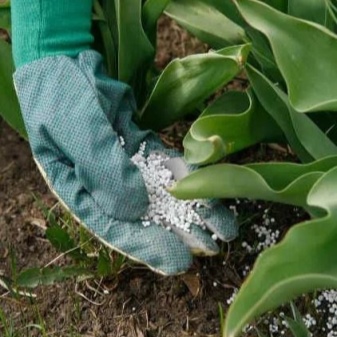
Among the miniature hosts, there are very finicky varieties. For example, the likes of Itsy Bitsy Spider. With a maximum height of 5 cm and a width of 18 cm, it takes a long time to grow. Suffers if moisture is in excess, and suffers from prolonged melting of snow. It is advisable to plant it separately in a small pot with a diameter of 7 cm.


Distinctive features of mini-host varieties
Share them for some features:
- by leaf color (from milky to rich green or heavenly);
- leaf shape (lanceolate, oval, wavy);
- on the surface of the sheet (from glossy-smooth to embossed).

The ability to combine all these traits in a varied sequence is simply amazing. The combination of wavy and smooth leaves with yellow veins on the host, oval leaves with a bluish tinge, yellow cups-shaped leaves - all this makes the hosta a fantastic shrub.
Varieties of miniature hosts
- Little White Lines - is a deep-colored spherical bush. The width of its rosette is 45 cm and the height is only 20 cm. It enchants with the color of its foliage. A green leaf with a white border looks great in any garden design. To maintain decorativeness, it must be divided once every 4 years. It is better for this variety to take root in a pot, without aggressive counterparts, there it will be more comfortable and safer.

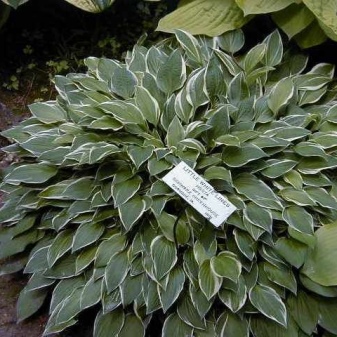
- "Cat and mouse". The head of the “mouse” family is an interesting variety - Blue Mouse Ears, which means “blue mouse ears”. The little function got this name thanks to the bluish shade of the leaves with a shape that really looks like a mouse's ears. Most notably, such a small bush has unusually large flowers. Lilac flowers have a delicate aroma. Due to the popularity of this species, new varieties have appeared with some additions and changes.


- Mini Skirt another undersized representative of the "family of mice". A rare variety. Small, delicate hosta with oval, bowl-shaped dark green foliage. The uneven edge is framed by a milky canvas. Blooms with lilac flowers. The height of the bush is 15-25 cm.


- Sparkler - This is a representative of the "striped" varieties. It has beautiful, shiny leaves, with painted lettuce or white stripes.


- Little treasure - a dwarf hosta with narrow leaves, the size of the bush is 15x20 cm. A distinctive feature of this hosta is a milky strip on the leaf, which visually divides it in half.


- Lemon Lime - has greenish-yellow wavy leaves. Changes color throughout the summer. At the beginning, its color is predominantly yellow. It grows quickly, the leaves are thin, because of this, they are susceptible to damage by slugs. By the end of summer, foliage becomes greener if it grows in a sunny location. It is used in decorative slides, ideally combined with stones and snags.


- Cat's eyes - dwarf variety. The slowly growing rosette has dense leaves. Its size is 15 cm wide and 5 cm high. Leaves are smooth, creamy yellow in the center with stripes. The bloom is purple. If there is a lot of sun, the leaves can burn out and turn white. For the development of a strong root system, it is best to plant in a pot.


The best companions
For harmony in the garden and comfortable growth of mini-hosts from neighbors, you need to choose shade-loving and dim plantings that will not overshadow the beauty of the babies. For this, saxifrage, liverwort, pansies, bells are suitable. They can be safely seated among the host, but so that they do not shade the bushes. It is not worth planting larger plants, as they will further emphasize the miniature size of the hosts.

Plant them with bulbs. In the spring, while the foliage of the host has not yet blossomed, daffodils or hyacinths will decorate the still-green flower bed. Distribute your plantings with an emphasis on color harmony. If your hosts are planted in pots, change their position in the garden. This way you will find a place where they are more comfortable. The assortment of hosta varieties makes it possible to plant them anywhere and will suit even the most capricious gardener. They will look great when planted in the form of a border in front of coniferous or fern plants, they will decorate alpine slides and waterfalls.

For information on how to properly care for a mini-host, see the next video.







































































































The comment was sent successfully.